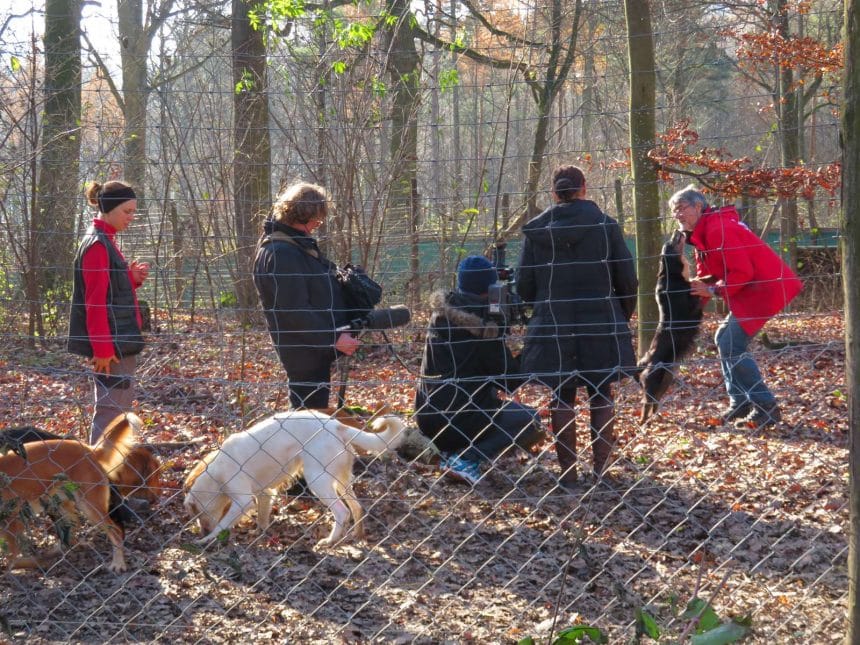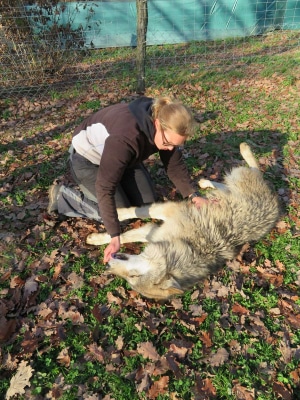A visit to the Wolf Science Centre near Vienna, Austria
Catching up with friends – 2 and 4-legged.
In mid November 2016 we visited the Wolf Science Centre near Vienna, Austria. We had a standing invitation from Dr. Friederike Range, one of the founders and principals of the Centre. In 2012 and again in May 2016 two of Haliburton Forest’s wolf pups were sent to Vienna to populate the centre’s wolf packs. The Wolf Science Center’s mission is to conduct internationally recognised, first-class research on the behaviour and cognition of wolves and dogs, as well as of the interspecific relationships we share with them as humans.
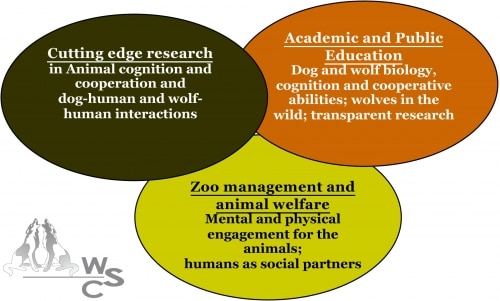
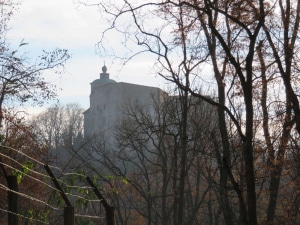
Today the working practices at the Wolf Science Centre are based on the understanding that animals are our partners, and are deserving of respectful handling and state-of-the-art keeping. They also aim to provide science-based information to the public in order to advance the cohabitation of wolves, dogs and humans worldwide, for the benefit of all parties. These are the self proclaimed goals of the centre, which we wanted to see in action.
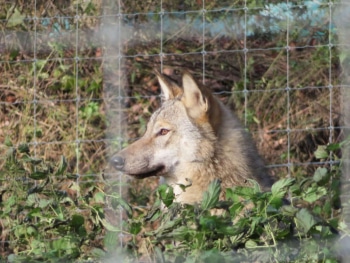
Finally we were joined by Marleen Hentrup, an old acquaintance, since she has visited Haliburton Forest already in 2012, when the first set of pups was transferred to Austria. But more about this later.
Ms. Hentrup is the trained and experienced “dog-trainer”, rather “wolf-trainer”, charged with the raising and training of all wolf pups that arrive at the centre. She accompanied us on our tour through the centre and commented on many of the animals we encountered. In total 34 canids live at the Wolf Science Centre: 17 wolves of different ages, sexes and origins and 17 dogs of a similar mix. None of the latter are pure-bred and all from pounds.
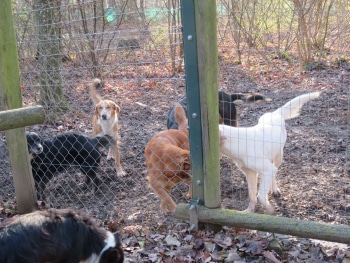
The Vienna wolves – and dogs for that matter – are totally socialized, to the point where they appear like pets, just like their domestic relatives, the dogs. And that is the purpose, to compare, in their behavioural studies apples with apples, domestic wolf with domestic dog and not, as in many other studies, canids of varying states of domestication. The Wolf Science Centre’s vision in this respect is spelled out as follows:
Our research and other activities shall contribute to the propagation of a society in which decision making is well informed. Based on scientific knowledge of animals’ behavioural needs and of their cognitive and emotional capabilities, such decisions would be founded on an intrinsic respect for animals as partners in research. Our scientific contribution explores wolves, dogs, and their long-standing relationship with humans, and will directly contribute to this pool of knowledge, thereby helping to develop a more adequate and respectful attitude towards these animals. In a better world for wolves, humans and dogs, this understanding will support the well-being as well as protecting of canines in the wild and in human custody.
The walk along the paths between the various enclosures confirmed the purpose of this fundamental research. All of the facilities and every process is well thought through, aimed at an academic, scientific purpose.
One of the highlights of the visit was the direct interaction with the two Haliburton Forest pups born here in late April. By the time we saw them again they were 6 months old and real wolf “teenagers”, mischievous, rambunctious and full of energy.
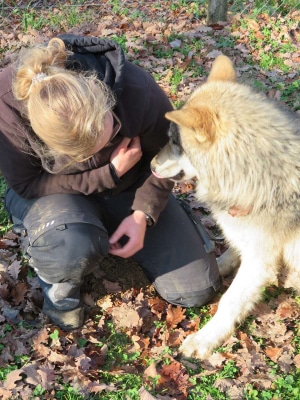
Etu was lovely to interact with. He willingly rolled over and loved a belly rub. Marleen Hentrup demonstrated her complete control over him. He was obedient like a domesticated dog, a definite pre-requisite for the work the researchers conduct with these animals. He not only responded to his name, but a number of voice and sign-language commands.
Daily, direct human interaction with these wolves is absolutely vital for the work at the centre.
Ela – Sun in Sioux – Etu’s sister, on the other hand was more reserved. Marleen Hentrup described her as very shy in the beginning. She just followed her brother around and also slept much more than Etu. Still, she was cheekier than him while playing and she now easily stands up to the others. When she wants to have a rest, she communicates it very clearly, too. In the meantime, Ela isn’t that shy anymore, and right now she seems to be the only one of the pups who doesn’t give a damn about the clicking of the camera.
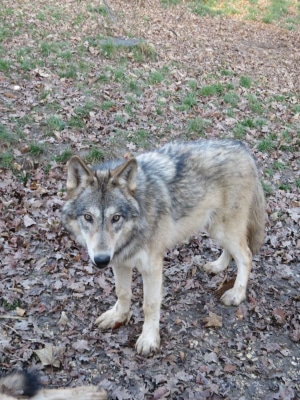
On our way to the indoor facilities we passed by Wamblee. Wamblee, referred to as the cuddly monster was one of two wolf pups transferred to Vienna from Haliburton in May of 2012. Unfortunately his sister died within a few months of arriving in Vienna. She had contracted a serious infection which in the end she succumbed to. But her brother Wamblee looked great ! When looking at Wamblee many visitors see first his glowing, yellowish eyes. They form a nice contrast to his black fur. This extraordinarily pretty, quite gracile male loves to be petted for hours by his caregivers. However, it is advisable to keep an eye on him since this rascal sometimes gets funny ideas.
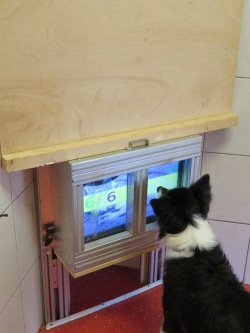
Our visit to the Wolf Science Centre expanded our insight into wolf behavior, research and wolf-dog-human relationships on various levels. Dr. Range and her team have accomplished a lot over the past decade, during which they have received many accolades for their approach and the resulting research. But the Wolf Science Centre is not working in an ivory tower. As part of the wildlife park, their facilities are open to the public. Moreover, they make every effort to educate the general, visiting public of their work and the wolf ecology associated with it. Their publications are an extension of their work which is starting to reach a wider public.
Upon leaving the Wolf Science Centre it felt good to know that our wolves had found a great home with superior care and attention. It felt even better to know that our wolves in Vienna are serving a good purpose, being ambassadors for their species and subjects of research beneficial to both wolves and humans.
Peter & Elke Schleifenbaum


